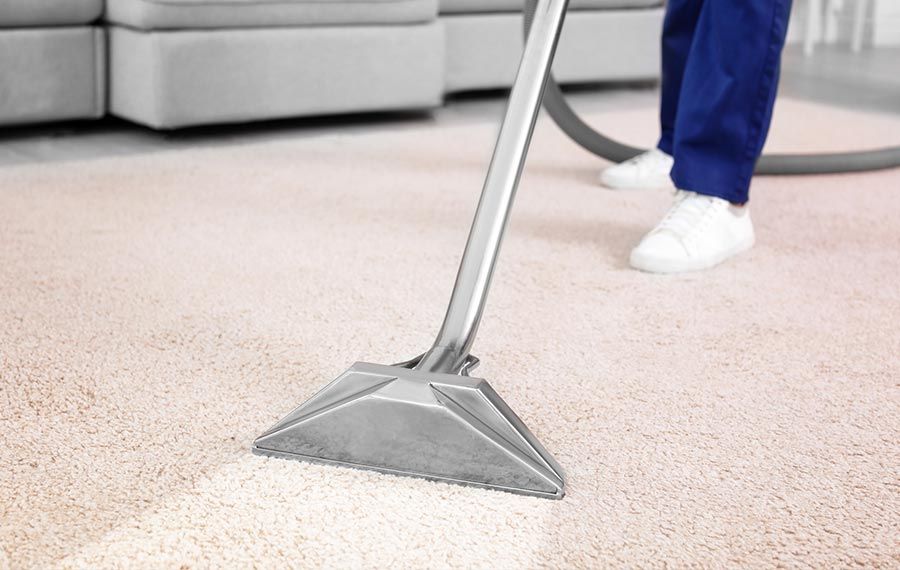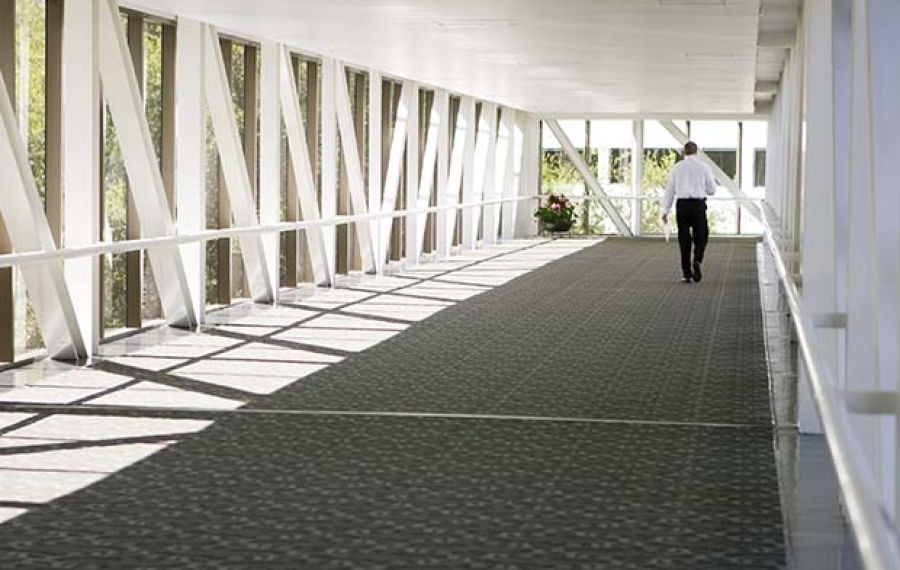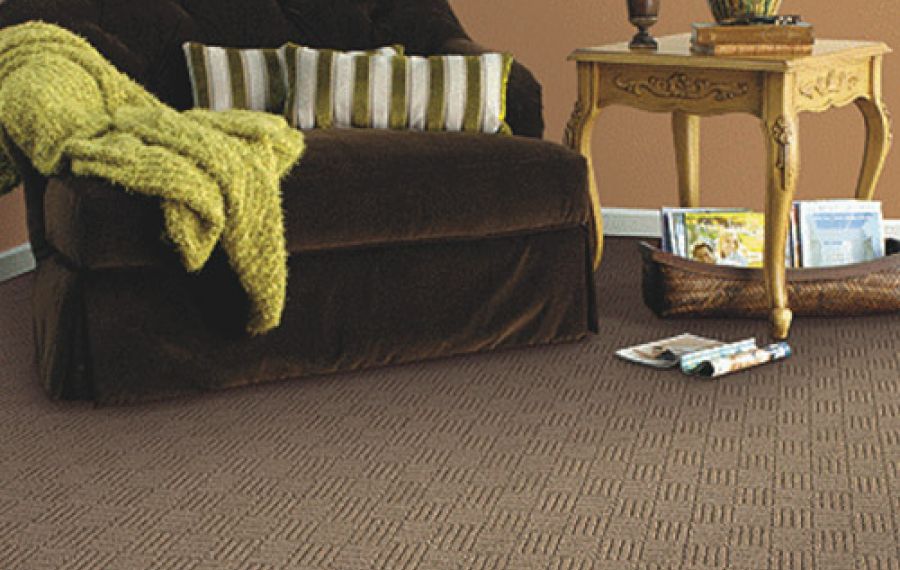Carpet in Houston
Modern carpet traces its roots to ancient times when cultures passed hand-tying and knotting skills from generation to generation. The Sixteenth Century brought merchant adventurers and explorers home to Europe and with them the awareness and desire for rich textiles and rugs from the East. It was not long before the appreciation of textile floor coverings took off, came to America, and became one of the most fundamental and beautiful parts of our modern home interior.
Carpet is still the primary flooring choice for many. After all, it is relatively inexpensive, comfortable, generally easier to install and replace than other floor coverings, and it offers more fashion options in colors and textures than any other floor covering option on the market.
Carpet offers you more warmth, softness and is much quieter than any other floor covering.
Today’s carpet styles, colors and textures also blend well with any home decor and with a variety of other flooring products. From traditional to country, from casual to formal, you can always find a carpet that will compliment any interior setting and give you years of beauty and performance.
Check it out, maybe print it out, and then come explore the other sections on beautifying your home with carpet.
- Carpet adds warmth and is soft under feet and easier on children’s knees.
- Carpet is much quieter than hard surfaces floors.
- Carpet comes in a wide variety of colors, tones and hues.
- Carpet is easy to decorate with and offers many styles and colors allowing it to be the focus of the room or the perfect foundation for your furniture and accessories.
- Carpet can hide many sub-floor irregularities that would not be permitted with hard surfaces floors.
- Carpet can go over a variety of substrates and on all grade levels, even concrete slabs in basements.
- Carpet is economical and the installation costs are generally less than some of the hard surface products.
THERE ARE SEVERAL DIFFERENT TYPES OF CARPET PILE THAT OFFERS DIFFERENT LOOKS AND TEXTURES.
Saxony Carpets, these carpets have a soft, deep, cut pile, but they are easily flattened and show vacuum cleaner marks. They are popular for bedrooms and living rooms, but best avoided in busy areas such as hallways.
Twist Carpets are smooth, hardwearing, and practical, which makes them very popular. They do not show footprints or furniture marks and are good at hiding dirt. They are a good choice for areas with lots of foot traffic and for families and pet owners. More than a third of people have bought twist carpets in the past 10 years.
Velvet Carpets have a dense, short pile with a smooth finish, so they are soft and cozy. This makes them a popular choice for bedrooms or living rooms.
Cut and Loop Carpets use a combination of cut and looped pile to create patterns. They are less popular now than in their 1970s heyday but can still be found.
Loop Carpet style is generally hard-wearing and practical, so it’s good for high-traffic areas. But loop carpets are a no for pet owners, as animals with claws – especially cats – are likely to get them caught in the looped fibers.
Berbers are made from uncut loops of pile, with a distinctive knot effect. They tend to be affordable and hard-wearing, and often have a lightly flecked coloring which makes them excellent at hiding dirt. Like other looped carpets, they can get pulls and snags.
Additionally, carpet is made from primarily three material types.
Wool carpets are natural, durable and provide good heat and sound insulation. They can also absorb and release moisture in the room, controlling humidity levels. But they do tend to be more expensive than synthetics, the colors can fade over time in areas consistently exposed to sunlight, and they are popular with hungry carpet moths and carpet beetles.
Nylon, also known as polyamide, is the most durable of the synthetic fibers. It can stretch without losing its shape, making it a good choice for rooms where furniture is often moved around, such as dining rooms.
Polyester is popular because it looks and feels most like wool, polyester is usually used as part of a blend with real wool. Like other synthetics, its stain resistance is a major benefit. It’s sometimes made from recycled plastic bottles, so can be an eco-friendly option.
CARPET PADDING
Even though the right carpet padding is essential to prolonging the life of your new carpeting, it is often overlooked and misunderstood. Most often we think carpet padding is for providing comfort underfoot, but it is really meant to absorb the pounding of foot traffic instead of the carpeting. For example: when we see traffic patterns in our carpeting it is generally caused by the carpet cushion underneath breaking down and collapsing, which causes the carpet pile to eventually crush. Having a quality, resilient carpet cushion keeps this from occurring and extends the life of the carpet.
Think of a carpet cushion as a shock absorber. When you step on top of carpet the force generated is absorbed by the cushion instead of the carpeting, which adds dramatically to the life of the carpet. The better grade cushions include odor protection and antimicrobial treatment to help resist bacteria, mold and mildew growing in the padding. Some carpet manufacturers also specify if a certain type and density of quality carpet cushion is not used, the carpet warranty may be voided. This is because a cheap carpet cushion will eventually break down and become compressed, losing its ability to help extend the life of the carpet.
Carpet Padding Density & Weight
Carpet cushion is often described by density, but there are various methods used to determine the density. This can make it very confusing when trying to select the right cushion for your carpeting. What is important is how much force does it take to displace the cushion and make it bottom out. This is usually referred to as indentation load deflection (ILD). Carpet cushion is also rated by its weight per cubic foot, but this doesn’t necessarily mean a heavier cushion won’t bottom out first.
Common Types of Carpet Padding
Bonded Urethane Cushion – also called rebond, is by far the most popular and widely accepted carpet cushion sold today. It is made from the re-claimed high-density foam scraps from the manufacturing of furniture and automotive seats. Rebond cushion is measured in pounds per cubic foot and comes in various thicknesses and densities.
Urethane Foam Cushion – this is prime urethane much like what is used in certain types of furniture and bedding cushions. Although some urethanes may hold up, many will collapse and bottom out much quicker than rebond cushions. When you see an ad for free carpet cushion with a purchase of carpeting, it is generally a cheap prime cushion that will not perform well.
Rubber Cushion – comes in both flat and waffle. Both types can be very heavy and very expensive, depending how much rubber is utilized versus other fillers. They are also not as readily available as bonded cushions.
Fiber & Hair Cushions there are three basic types of Fiber pad. These are Natural Fiber ( jute and animal hair) Synthetic or Resonated Recycled Fiber. These are all usually utilized where there is constant, severe or high traffic areas such as in restaurants, offices, hotel lobbies, malls, schools and many other commercial and institutional applications. Fiber pads are also recommended when placing carpet over a radiant heated subfloor in a residential application. The grade of this pad is determined by its weight in ounces per square yard.
Other Services
Schedule a free estimate.





